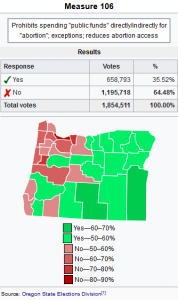 After Donald Trump made a third appointment to the U.S. Supreme Court, many women began expressing concern about the right to abortion – something many grew up taking for granted. Could that right be suddenly snatched away at any time?
After Donald Trump made a third appointment to the U.S. Supreme Court, many women began expressing concern about the right to abortion – something many grew up taking for granted. Could that right be suddenly snatched away at any time?
Before a very different Court issued its Roe v. Wade decision in 1973, the U.S. was a patchwork of laws, differing from one state to the next. One result of this was that while wealthy women could easily fly off to New York or Honolulu to get care for themselves or their daughters, working-class women had far fewer options. It also meant that women had a great deal less privacy, since a Kentucky woman’s weekend trip to Charleston or an Idaho woman’s family emergency in Seattle was liable to make her the subject of gossip.
Most of the 20 states which didn’t ban abortion entirely placed restrictions on when an abortion could be performed, based on a “model bill” published by the American Law Institute in 1962, which approved abortion if it was done because of severe fetal abnormality which made a normal life unlikely, if the pregnancy posed a risk to the life or health of the mother, or if the pregnancy resulted from what they called “rape, incest, or other felonious intercourse.”
Oregon’s History of Abortion Rights
 Oregon took a different approach. The law passed by the state legislature in 1970 was modelled after the British Abortion Act of 1967, as a result of which Oregon became the only state where there are no limitations on abortion, other than that a woman be a resident of the state for at least 90 days – a restriction which has since been removed.
Oregon took a different approach. The law passed by the state legislature in 1970 was modelled after the British Abortion Act of 1967, as a result of which Oregon became the only state where there are no limitations on abortion, other than that a woman be a resident of the state for at least 90 days – a restriction which has since been removed.
In 1973, the United States Supreme Court ruled 7-2 in the Roe v. Wade decision that the various state bans on abortion were an unconstitutional intrusion. At the time, public reaction was mild. Abortion was not a central issue for religious conservatives. The decision’s effect on Oregonians was small, since there were relatively few restrictions on abortion prior to the ruling.
Since 1973, there have been many petitions circulated to propose changes to Oregon’s regulation of abortion, some of which have become ballot initiatives. None have passed.
In 1990, Ballot Measure 8 would have banned abortion entirely, with exceptions only for rape, incest, and the woman’s health. It failed, with only 32% voting “yes.” Ballot measure 10 would have required parental notification before a minor could obtain an abortion, and failed with 43% “yes” votes.
In 2006, Ballot Measure 43 would have required that parents be informed at least 48 hours before a minor could have an abortion. It failed.
In 2018, an abortion restriction law that would have stopped state funding of abortion was put on the ballot as Measure 106, and was defeated, receiving 35% “yes” votes.
Measure 106, and was defeated, receiving 35% “yes” votes.
Oregon remains one of seven states in which there are no limits on the point during pregnancy when an abortion can be performed. This is a matter where there is a great deal of confusion and emotional investment.
Lurid stories of “sucking out brains” make it difficult to assess late-term abortion. The truth is that no woman has ever sought a third-trimester abortion because she dithered over her decision for six or seven months. A letter signed by 147 people who were part of the late abortion community reads in part: “The decision to terminate a pregnancy is never a political one, it is a personal one. Later abortions stories are ones of tragedy and loss, relief, inequality, struggles with hope, people betrayed by their bodies, and the incredible complexity of pregnancy.”
 Yet for a physician to simply state their willingness to perform the delicate and difficult procedure of a third-trimester abortion puts them at risk of being murdered by a far-right terrorist, the way Dr. George Tiller, Dr. Barnett Slepian, Dr. David Gunn and Dr. John Britton have been, as well as dozens of other victims of abortion terrorism across the country, including in Oregon.
Yet for a physician to simply state their willingness to perform the delicate and difficult procedure of a third-trimester abortion puts them at risk of being murdered by a far-right terrorist, the way Dr. George Tiller, Dr. Barnett Slepian, Dr. David Gunn and Dr. John Britton have been, as well as dozens of other victims of abortion terrorism across the country, including in Oregon.
Rachelle “Shelley” Shannon of Grants Pass is considered a “martyr” by illegal abortion activists because of the thirty years she spent in prison. She is considered a violent terrorist and a frighteningly successful propagandist for her cause by most other people.
 Shannon was radicalized by her association with an extremist group calling itself “the Army of God,” and committed a series of crimes, including criminal trespass in organizing clinic blockades, multiple instances of arson and butyric acid attacks, but was not convicted in any of these occasions. After Dr. David Gunn was murdered, Shannon wrote more than 25 letters to the murderer, whom she called a “brave soldier.” Shannon eventually decided she needed to emulate her hero, and attempted to murder Dr. George Tiller.
Shannon was radicalized by her association with an extremist group calling itself “the Army of God,” and committed a series of crimes, including criminal trespass in organizing clinic blockades, multiple instances of arson and butyric acid attacks, but was not convicted in any of these occasions. After Dr. David Gunn was murdered, Shannon wrote more than 25 letters to the murderer, whom she called a “brave soldier.” Shannon eventually decided she needed to emulate her hero, and attempted to murder Dr. George Tiller.
Even while in prison, Shannon spread her gospel of terrorism. One young radical  corresponded with Shannon and visited her in prison before he murdered Dr. John Britton and his volunteer security escort. Another communicated with and visited Shannon before he entered the Reformation Lutheran Church in Wichita and finished her failed mission by murdering Dr. George Tiller.
corresponded with Shannon and visited her in prison before he murdered Dr. John Britton and his volunteer security escort. Another communicated with and visited Shannon before he entered the Reformation Lutheran Church in Wichita and finished her failed mission by murdering Dr. George Tiller.
A group called “Josephine County Right to Life” holds an annual parade in Shannon’s home town of Grants Pass, where in 2012 a man was knifed by a protester. When Shannon’s sentence was up in 2018, many were concerned about what she was likely to do, but her sentence had been served, and the Federal government had no choice but to release her. Shannon settled in the state of Washington after her release. Her activities since then are not public knowledge.
Your Rights Today
 But, if Roe is overturned, what exactly happens in Oregon? That depends on whether the Justices only overturn the precedent, or if they take a more aggressive approach. If the country is simply thrown back onto the state-by-state model, nothing will change in Oregon immediately, since Oregon law firmly puts choice in a woman’s hands, and there is no sign of the illegal-abortion movement gaining any traction.
But, if Roe is overturned, what exactly happens in Oregon? That depends on whether the Justices only overturn the precedent, or if they take a more aggressive approach. If the country is simply thrown back onto the state-by-state model, nothing will change in Oregon immediately, since Oregon law firmly puts choice in a woman’s hands, and there is no sign of the illegal-abortion movement gaining any traction.
Many states have “trigger laws” which would require the state to disallow all abortions should the federal government outlaw the practice. Oregon has the opposite – a law which ensures a woman’s right to choose in spite of the federal government’s possible intervention.
That’s assuming Oregonians have any say in the matter. In recent years, the Court has felt free to rewrite  legislation dramatically, as they did in 2013 when they gutted the Voting Rights Act, declaring that Congress would surely have gutted the act themselves if they had not been afraid of the wrath of voters.
legislation dramatically, as they did in 2013 when they gutted the Voting Rights Act, declaring that Congress would surely have gutted the act themselves if they had not been afraid of the wrath of voters.
Recent opinions issued by the current Court have shown that the three most recent appointees have a very different approach to the law than earlier Justices had, so people should not rely too heavily on the idea that if the court strikes down Roe, they will do so in a restrained and minimalistic fashion, especially since some Justices currently on the bench seem to have extreme views on abortion and even contraception. They might simply declare that, as the bumper sticker puts it, “abortion is murder,” making it illegal under all circumstances, in all fifty states.
By: John M. Burt
Do you have a story for The Advocate? Email editor@corvallisadvocate.com

